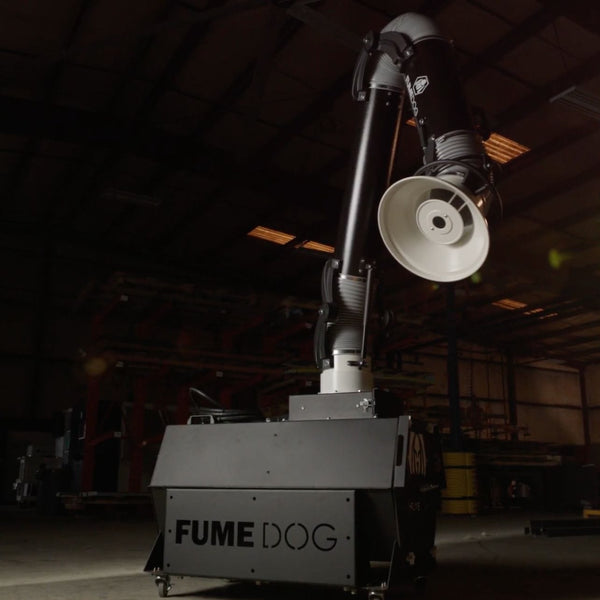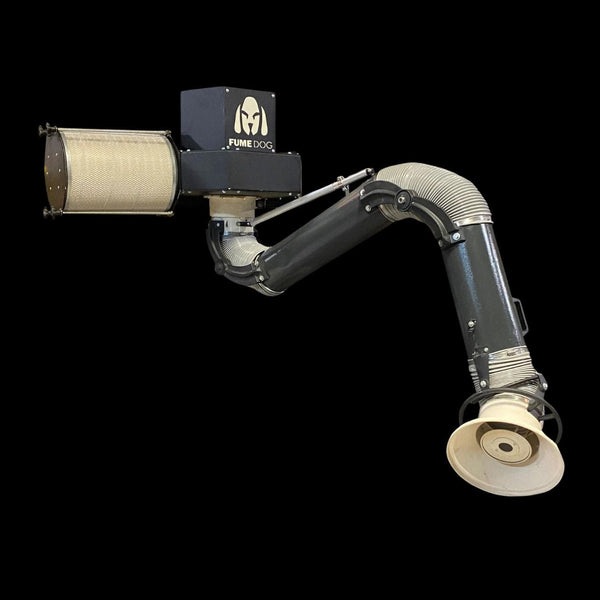
Struggling to manage those pesky welding fumes in your workshop? You’re not alone. OSHA has strict guidelines for ventilation, and missing the mark can lead to dangerous air quality.
This guide will help you understand how many CFM (cubic feet per minute) you need for an effective welding fume extractor. Ready to breathe easier?
Key Takeaways
- Proper CFM Based on Tools: For standard MIG welding, aim for a fume extractor with approximately 100 CFM. If using a setup with a 3” diameter arm, increase to around 200 CFM.
- Essential Air Changes: Ensure your ventilation system achieves twenty air changes per hour to keep the workspace air clean and free of toxic fumes.
- Closeness Matters: Position the fume extractor hood close to the welding arc for maximum efficiency in capturing harmful particulates right at the source.
- Adjustments for High Parameters: Increase airflow by about 30% when engaging in high-parameter welding tasks to ensure adequate fume extraction.
- Different Welding Processes Needs Different CFM: Understand that various welding techniques like TIG or stick may require different CFMs; adjust based on specific factors such as material type and shielding gas usage.
Looking for the best welding fume extractors in the industry?
Look no further! Contact Fume Dog today and experience top-of-the-line solutions for a safer and cleaner work environment. Don't compromise on quality—reach out to us now and let Fume Dog take care of your welding fume extraction needs!
Call us at +1 800 980 3481 or email us at sales@fumedog.com to learn more.
The Importance of Proper Ventilation for Welding

Without proper ventilation, welding fumes can turn your workshop into a toxic playground. Imagine choking on clouds of metal particles instead of getting the job done!
OSHA requirements
OSHA doesn't mess around with safety, and neither should you. For welding in confined spaces, mechanical ventilation is a must. Got a tight spot? You need air line respirators for those workers.
Don’t forget emergency removal means—no one wants to be stuck sucking on weld fumes.
Local exhaust systems play the starring role here. Hoods have to be close enough to your work that they'll catch those pesky particulates right at the source. Contaminated air isn't allowed to just hang around either; it needs to get discharged into open air where it's less harmful.
Minimum recommended air changes per hour
A proper ventilation system needs twenty air changes per hour. This ensures that welding fumes don't hang around like unwanted guests. Imagine replacing the entire room volume with fresh air six times an hour—your lungs will thank you! Most shop rooms lack sufficient ventilation, making it crucial to use suction hood systems or exhaust fans.
Measuring the speed of exiting air is a breeze with an anemometer. By maintaining recommended air changes, filtered air replaces toxic fumes efficiently. It's vital for all those working in your welding area to have clean, breathable air, not just a foggy haze of doom!
Understanding CFM and FPM in Welding Fume Extraction

CFM measures the airflow volume moved by your fume extractor, while FPM indicates the speed of that air. Get these two right, and you'll have a workspace as fresh as a daisy—or at least less smoky.
Recommended CFM for welding fume extractor
Need a welding fume extractor that works like a champ? Stick to the numbers and avoid guesswork. For a standard MIG gun, you need about 100 CFM of air flow. Got a 3” arm on your setup? You’re looking at needing around 200 CFM to keep those fumes in check.
Different diameter arms have their own CFM requirements, and pressure drops in your system should be no joke either. Exterior hoods doing the heavy lifting? They usually capture velocities between 100–170 FPM.
And if you're rocking high-parameter welding, crank up the airflow by 30%. Not rocket science, but still critical!
Factors that affect CFM and FPM
Turns out, welding parameters and position can be real divas in the airflow department! Different settings and angles demand unique amounts of CFM (Cubic Feet per Minute) and FPM (Feet per Minute).
Closeness of the fume extractor to the weld is also a major player. Too far, and it might as well be on vacation; too close, and you're risking sucking up more than fumes.
Materials used in your project dabble in this game too. Coatings on metals or different alloys influence how much airflow you need. Pressure drop? It's not just for tire gauges – it impacts system design big time! Low Volume High Velocity (LVHV) systems cover all bases like an overzealous goalie, while High Volume Low Velocity (HVLV) systems handle precise extraction with finesse.
Make sure to consider both maximum and operating airflow for optimal efficiency in your filtration system.
Choosing the Right Fume Extractor for Your Workspace

Calculating the required CFM is a bit like finding Waldo, but with more math and fewer stripes. Different welding processes might demand more or less airflow, so it’s crucial to know what you’re working with.
Calculating required CFM
Ever tried sucking spaghetti through a straw? That's what welding fume extraction feels like without the right CFM. Use a Ductulator or Slide Rule to find your perfect number. For instance, that sleek 6” diameter arm demands around 600 CFM to keep things breezy.
Face opening times face velocity equals required CFM – simple multiplication saves lives! And don’t skimp: high-parameter welding needs at least a 30% boost in airflow. Pressure drops and extractor size also play key roles, so no cutting corners unless you enjoy breathing last night's chili fumes.
Considerations for different welding processes
Different welding processes require varying levels of fume extraction. MIG welding typically needs about 100 CFM for optimal fume extraction, especially when using a fume extraction gun.
On the other hand, TIG and stick welders might need higher or lower CFM depending on factors like shielding gas usage and material type. This isn't just splitting hairs; getting the right airflow means better safety and compliance.
Downdraft tables are another beast altogether, often seeing use with plasma cutting or grinding operations. Local exhaust hoods or arm systems can vary in their CFM demands based on proximity to the source and work volume.
Fume Dog's got you covered whether you're dealing with LVHV (low-volume high-velocity) setups for spot-on capture or HVLV (high-volume low-velocity) systems for broader sweeps—tailor your ventilation strategy to fit your specific tasks perfectly!
Other Factors to Consider for Effective Welding Fume Control
Don't forget, where you place your fume extractor can make or break its effectiveness. And let’s be honest, if you're not maintaining it regularly, even the best equipment won't save the day!
Source capture vs. ambient ventilation
Who knew fume capture could be funny? Let's dive into the battle of the century: source capture vs. ambient ventilation. Source capture is like a ninja, stealthily swooping in to grab those nasty weld fumes right from their origin.
It's not just about showing off – this method keeps your lungs happy by reducing exposure to harmful particles. Plus, it's an energy-saving superhero because it stops dangerous fumes before they even get the chance to disperse.
On the other hand, ambient ventilation takes a more "go with the flow" approach. It spreads out and dilutes fumes throughout a larger area, which might sound cool until you realize it’s like trying to catch smoke with a butterfly net – good luck! For effective welding fume control, using flexible fume arms can ensure precise source capture despite any rogue arm positioning mishaps.
Secondary air filtration systems also come in handy for catching any sneaky residual fumes that slip through cracks. So whether you're team ninja or team butterfly net, there's one clear champ when it comes to keeping you breathing easy on the job!
Proper maintenance and placement of fume extractor
Positioning the fume extractor hood close to the welding arc is like putting a magnet next to metal shavings. It maximizes efficiency and sucks up those nasty fumes right at the source.
Check exhaust flow rates regularly; just like your morning coffee, you need it strong and steady for peak performance.
Skip regular maintenance on your fume extraction systems, and you may as well invite toxic friends CrVI and Mn over for dinner. LEV systems can significantly reduce exposure when properly maintained, making them superheroes in your workshop.
Portable LEV units also help cut down particulate exposure, keeping the air you breathe cleaner than a whistle!
Conclusion
Choosing the right welding fume extractor is crucial, but it doesn't have to be rocket science. Aiming for around 600 CFM typically does the trick for most setups with a 6” diameter arm.
Remember, more airflow usually means better capture of those pesky fumes. Keep your workspace safe and breathe easy!
FAQs
1. How many CFM is needed for a welding fume extractor?
A welding fume extractor typically needs 80 to 150 cubic feet per minute (CFM) depending on the size of the work area and type of welding.
2. What role do fume extraction guns play in controlling exhaust air?
Fume extraction guns capture fumes right at the source, reducing harmful exhaust air before it spreads across the workspace.
3. Can natural ventilation replace a squirrel cage fan in a welding setup?
Natural ventilation can help but isn't as effective as using a squirrel cage fan, which provides consistent airflow to remove fumes efficiently.
4. Why is knowing how many CFM you need important for welding safety?
Knowing how many CFM you need ensures that your fume extractor removes enough pollutants from the air, keeping your workspace safe and clean.





